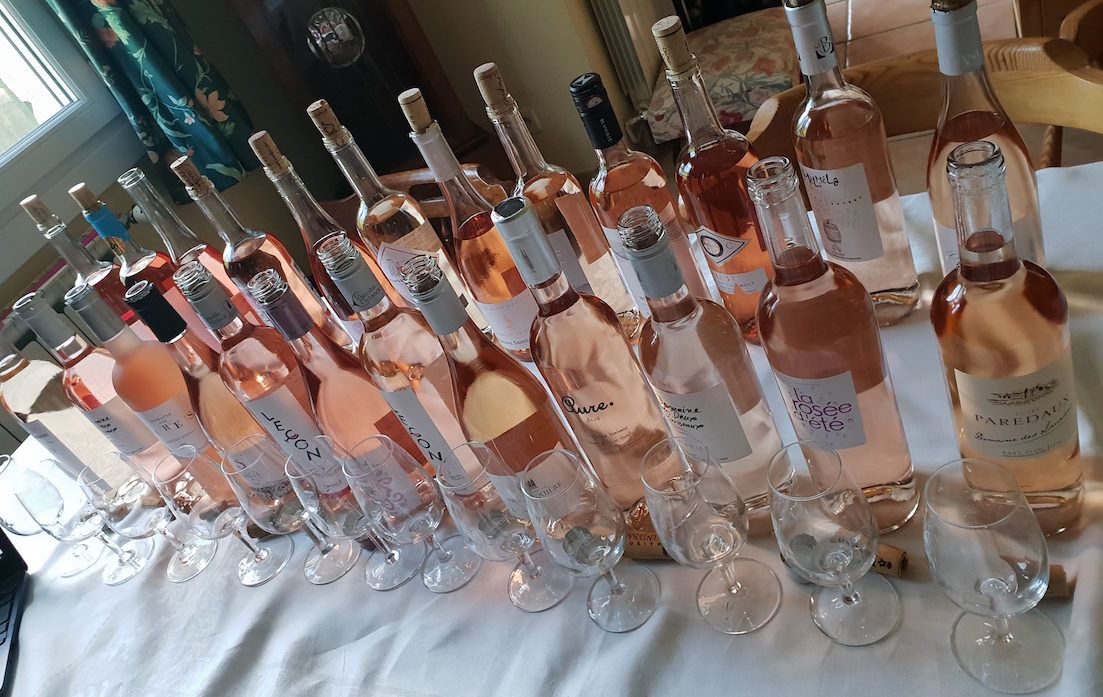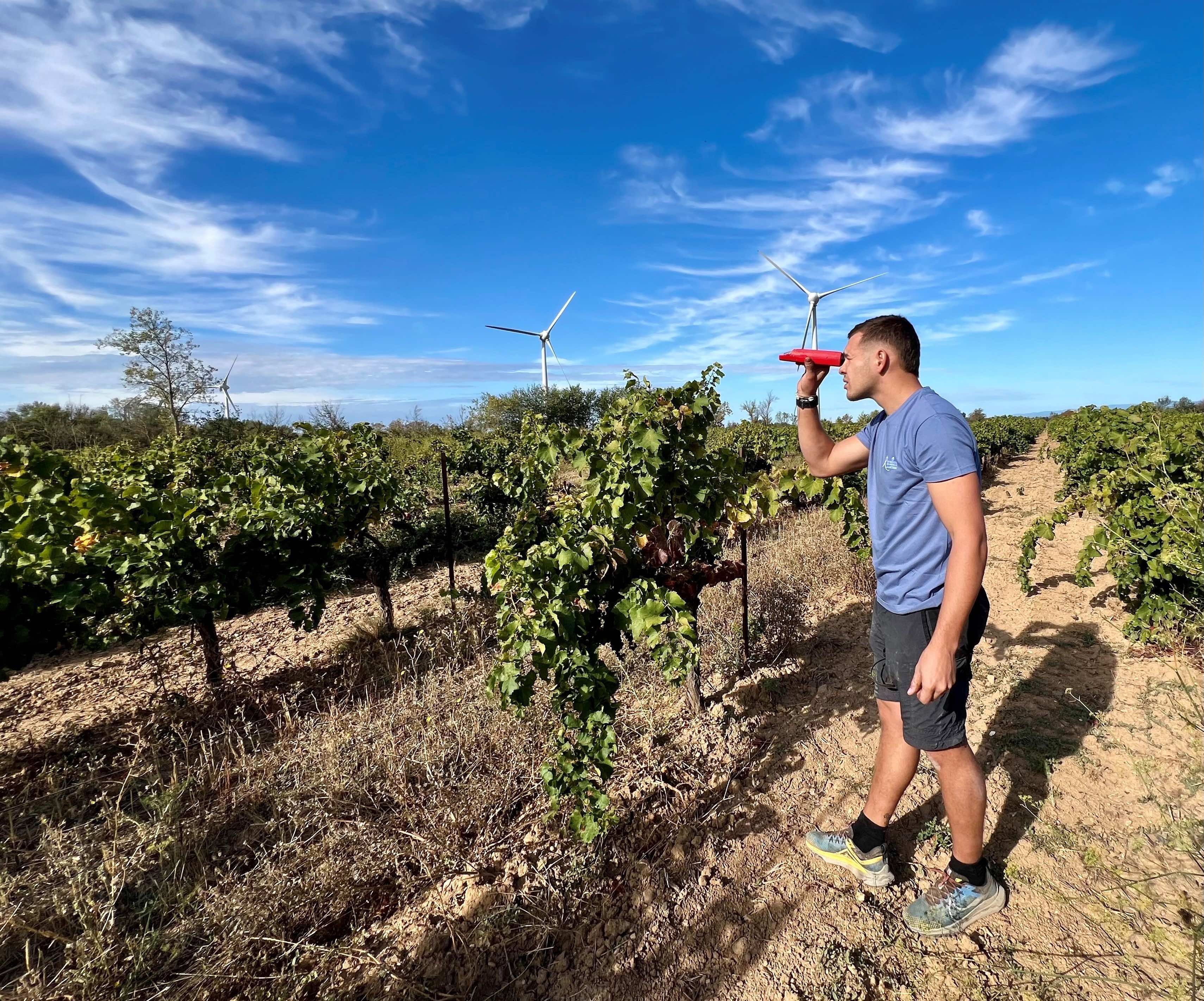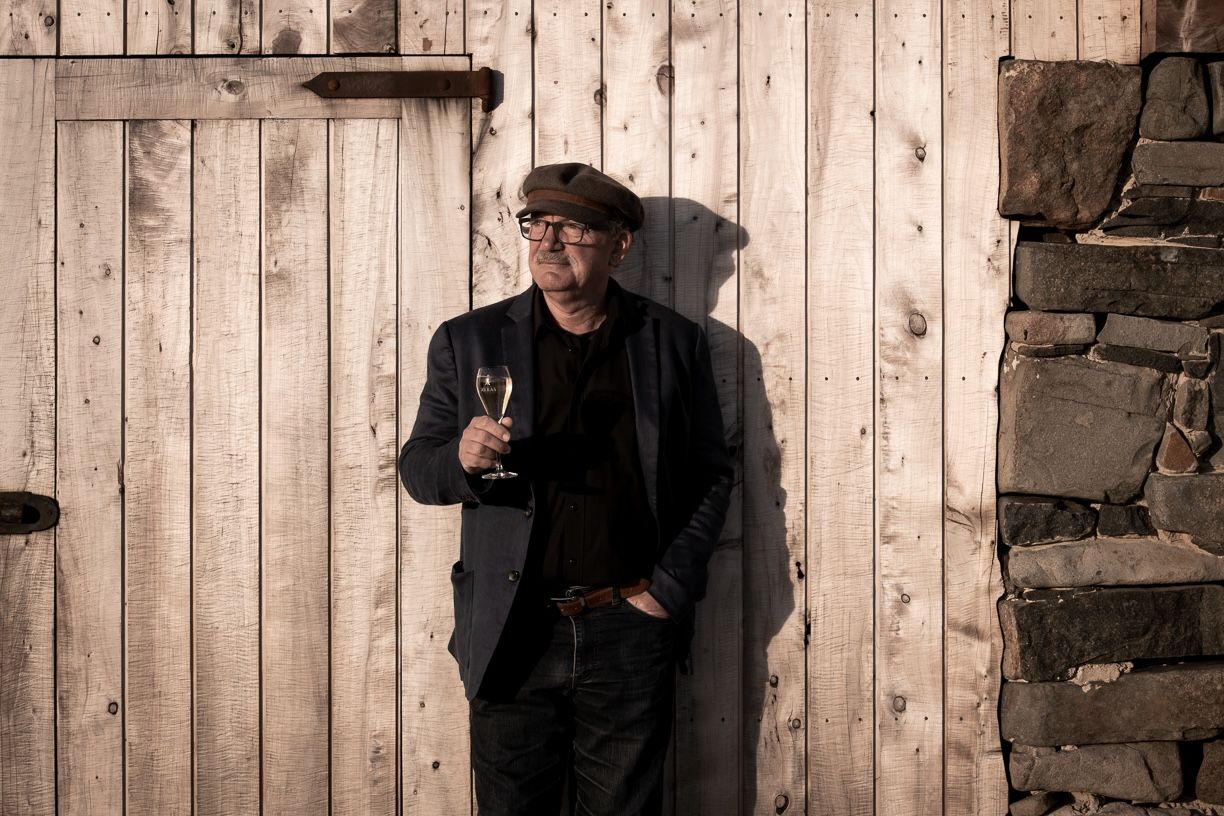Pleasantly surprised by the range and quality on offer Gabay concludes “Chapeau to IGP Pays d’Oc Rosé!”
IGP Pays d’Oc may not be a denomination which springs to mind when considering French rosé, but with 23% of French rosé production 1.6 million hl in 2018 (compared to 1.1 million hl from the three combined Provence appellations of Côtes de Provence, Coteaux Varois and Coteaux d’Aix), it is certainly a market sector worth considering.
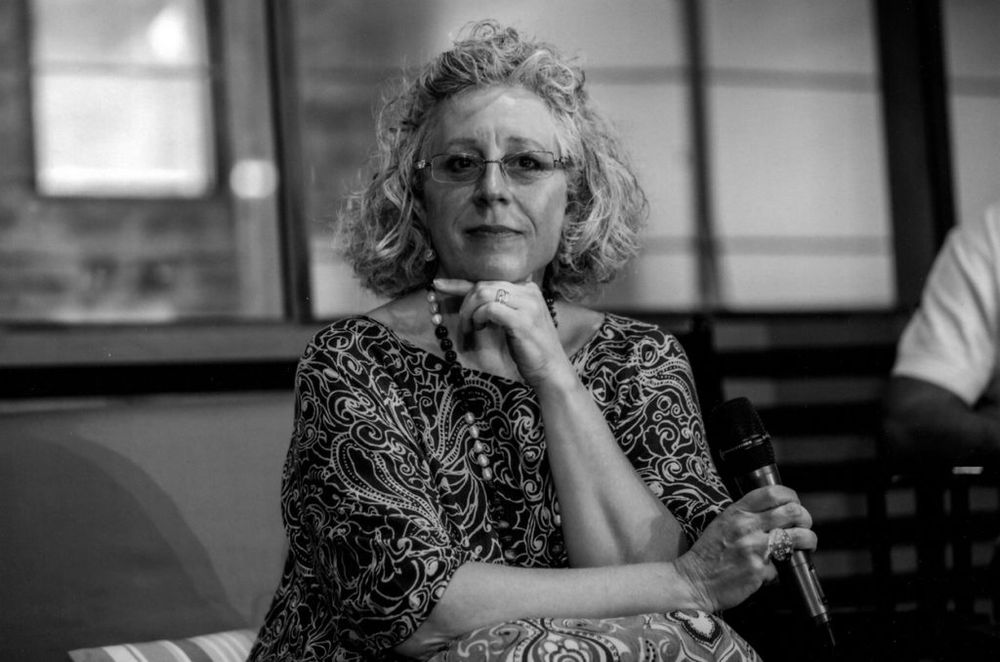
Elizabeth Gabay MW is one of the world’s leading authorities on rosé
Following Languedoc winemaker Robert Skalli’s studies in California in the late 1970s, he became convinced that the climate in Languedoc was similar to that of California, and that the Languedoc could be the New World region of France and could produce quality single varietal wines. The denomination was created in 1987. Today, Florence Barthès, the director of the IGP Pays d’Oc says that single varieties are the DNA of the denomination with over 90% of wines being labelled as varietals (in reality this means at least 85% of the wine is made from a single variety). Amongst the rosés, Grenache remains the single most popular variety, closely followed by Cinsault then Syrah.
Faced with the daunting task of tasting 97 IGP Pays d’Oc rosés, I was expecting a degree of uniformity and fashionable restrained dryness. ‘Find ten or twelve examples you like’, I was told. Instead, I was bowled over by both the quality and range of styles on offer, and struggled to limit my selection. My favourites included varietal expression, with some more joyful, others more serious and complex. There may not be a single style, but there is certainly lots to discover.
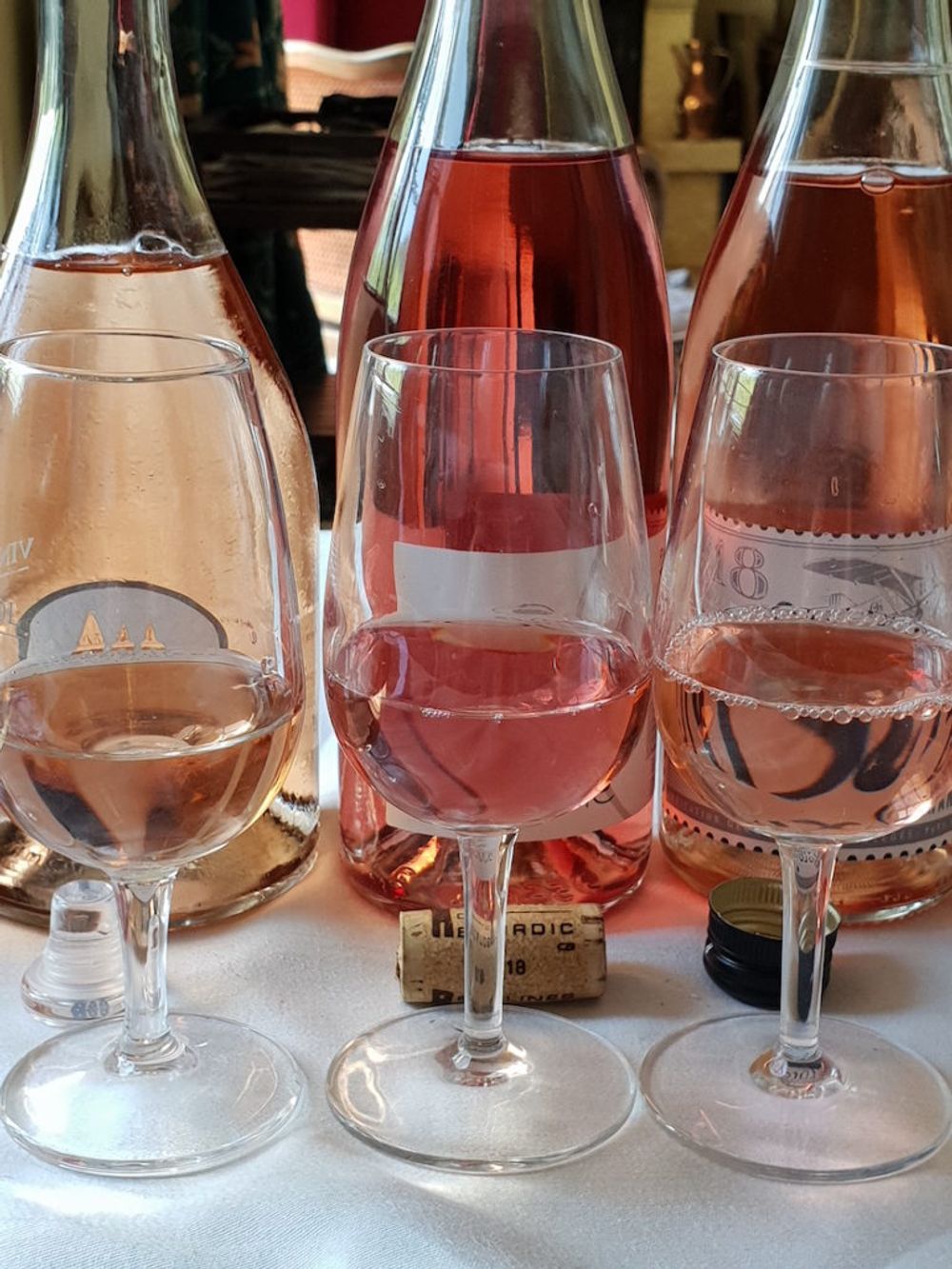
The range of colours of IGP Pays d’Oc rosé
Grenache Noir and Grenache Gris
Grenache, which can include both Noir and Gris versions, came in a number of different styles. I particularly liked the version by Domaine de l’Herbe Sainte [not in UK] with its classic salmon pink colour followed by an explosion of wild raspberry fruit on aroma and palate, ripe creamy body, a fine mineral core and long mouthwatering acidity. Gerard Bertrand’s Naturae had intense strawberry jam fruit with vibrant, intense acidity that left the mouth tingling with fresh fruit.
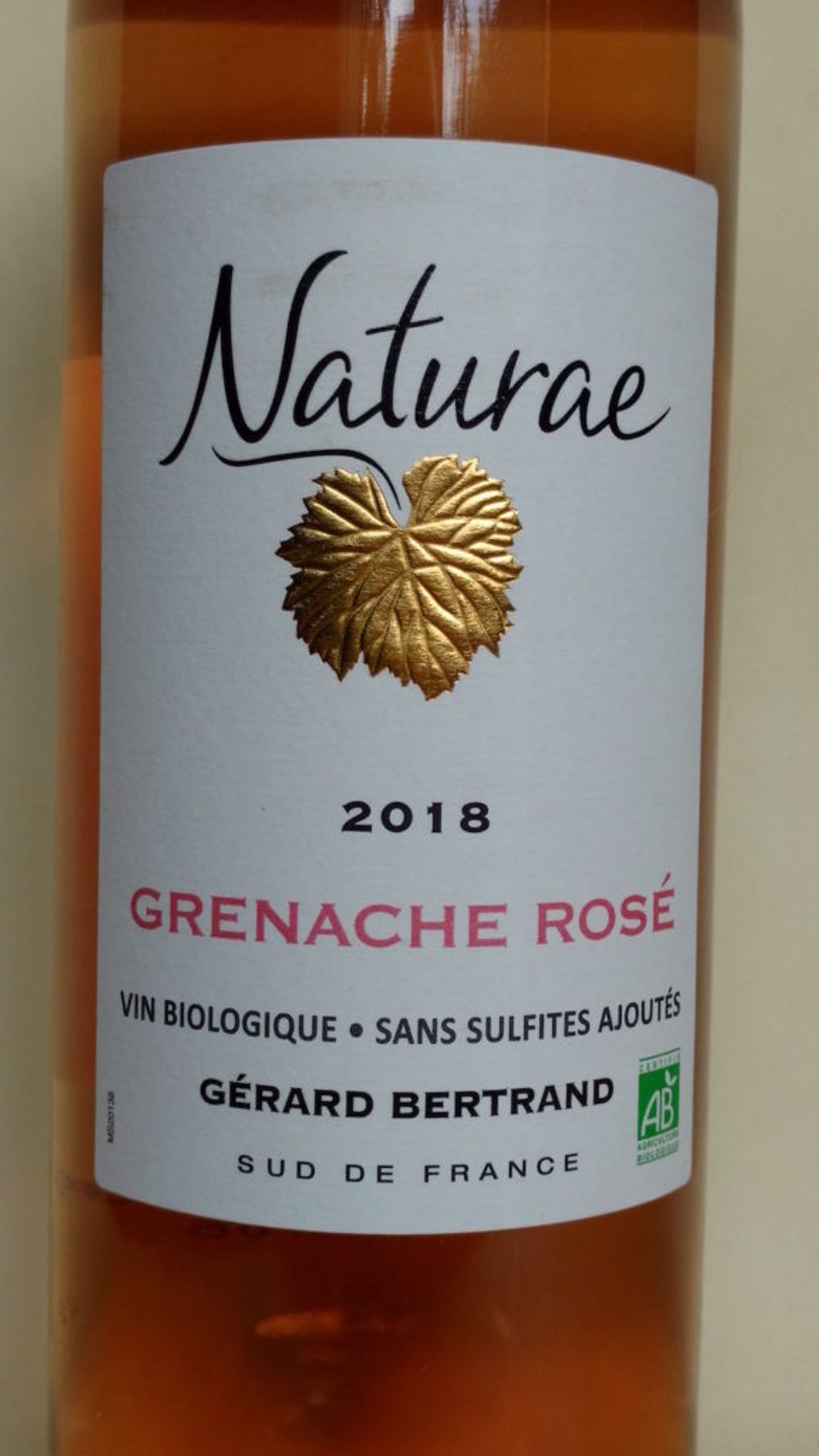
The pale Gris rosés of Languedoc have more akin with Provence rosé. Les Vignobles Foncalieu’s Le Versant [Inverarity Morton and Hennings Wine, about £9.99 retail] was a pale shell pink with creamy white peach and apricot fruit, round, rich, creamy texture and an overall lush softness backed by long vibrant acidity. Les Jamelles Clair de Gris [not in UK] made with Grenache Gris had intense raspberry, whte peach fruit, fresh pear, white flowers and lemon and lime acidity – a lovely wine for a summers evening in the garden – softer and riper than a white wine, with fresh vibrant elegance. Calmel & Joseph’s Villa Blanche [Daniel Lambert Wines, around £11.99 retail] 60% Grenache Gris and 40% Grenache Noir was a more structual style with creamy white peach fruit, redcurrants, wild bramble and fraise de bois fruit. A serious dry rosé with nice complexity and intensity. Les Collines du Bourdic’s Eclat de Gris [not in UK] had delicate creamy peach and apricot fruit with hints of wild berry tartness and lime acidity.
Cinsault 100% and blended with Grenache
Cinsault can make some stunning rosés with the best ones, for me, having a touch of varietal floral character. Some excellent examples also showed just how fascinating this variety can be. Domaine St Nicolas’s Rubis [not in UK] had just those floral aromas leaping out of the glass. On the palate intense cherry, sour redcurrant and floral (almost rose like) fruit backed with intense, textural acidity giving the wine real grip on the finish. Chateau Py [not in UK] had pretty red berry, strawberry and cherry fruit with long silky acidity and a fine mineral core. Deceptively restrained, this proved to be a serious rosé with hidden depths and structure. Borie Neuve’s Particula [not in UK] had similar red fruit character with a luscious ripeness and a firm mineral acidity. Vibrant and fruity, a wine to sit back and enjoy. Le Rosé de Bessan’s Libellule [not in UK] had veil-like delicacy with fresh white fruit, blue and white flowers, creamy texture with fresh mineral acidity. Pretty and fresh.
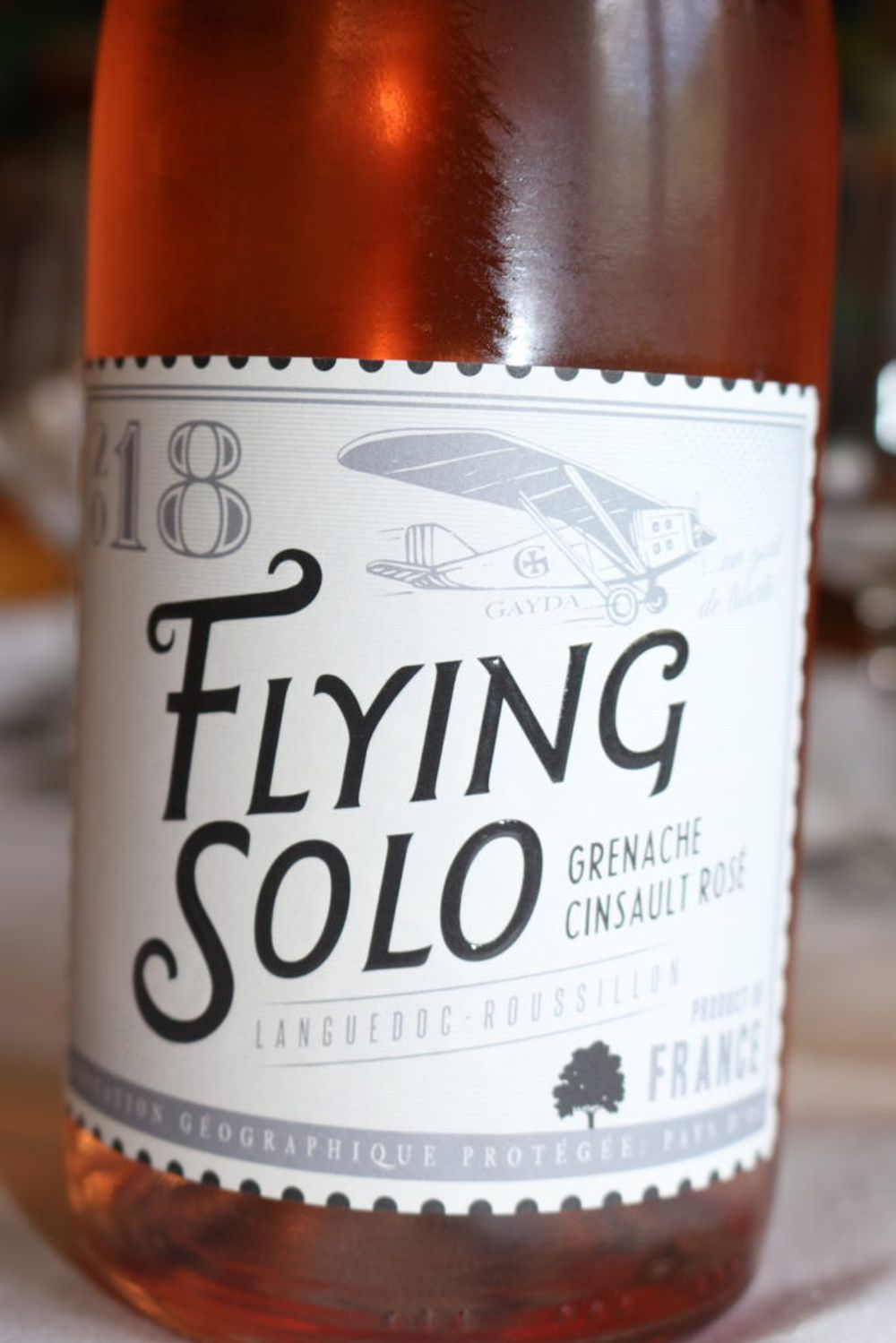
Blending Grenache and Cinsault also produced some pretty styles. The following two were 50:50. Domaine de Puilacher’s Variation, [not in UK] was creamy rich, intense peach, citrus acidity and totally charming while Domaine Gayda’s Flying Solo [New Generation Wines, around £10.50 retail] had vibrant, lush strawberry and raspberry fruit, a whiff of flowers, crisp acidity and perfect for easy summer drinking.
Syrah
The range of Syrah rosés rather caught me by surprise with their beautiful fruit character. Les Collines du Bourdin’s [available through Sommelier Consultant] was beautifully dark pink pointing the way to lush raspberry fruit backed by a firm mineral structure and fresh acidity. Its intensity and structure made this a perfect rosé for red wine lovers, great to go with summer food – I just loved the structural firmness and mouthwatering fresh, tart wild berry fruit. Le Rosé de Bessan’s Bouche Bée [not in UK] was also full of fruit – redcurrant, raspberry and even a hint of wild strawberry vivacity with intriguing Syrah notes which reminded me of Parma violets and cassis hovering mid-palate.
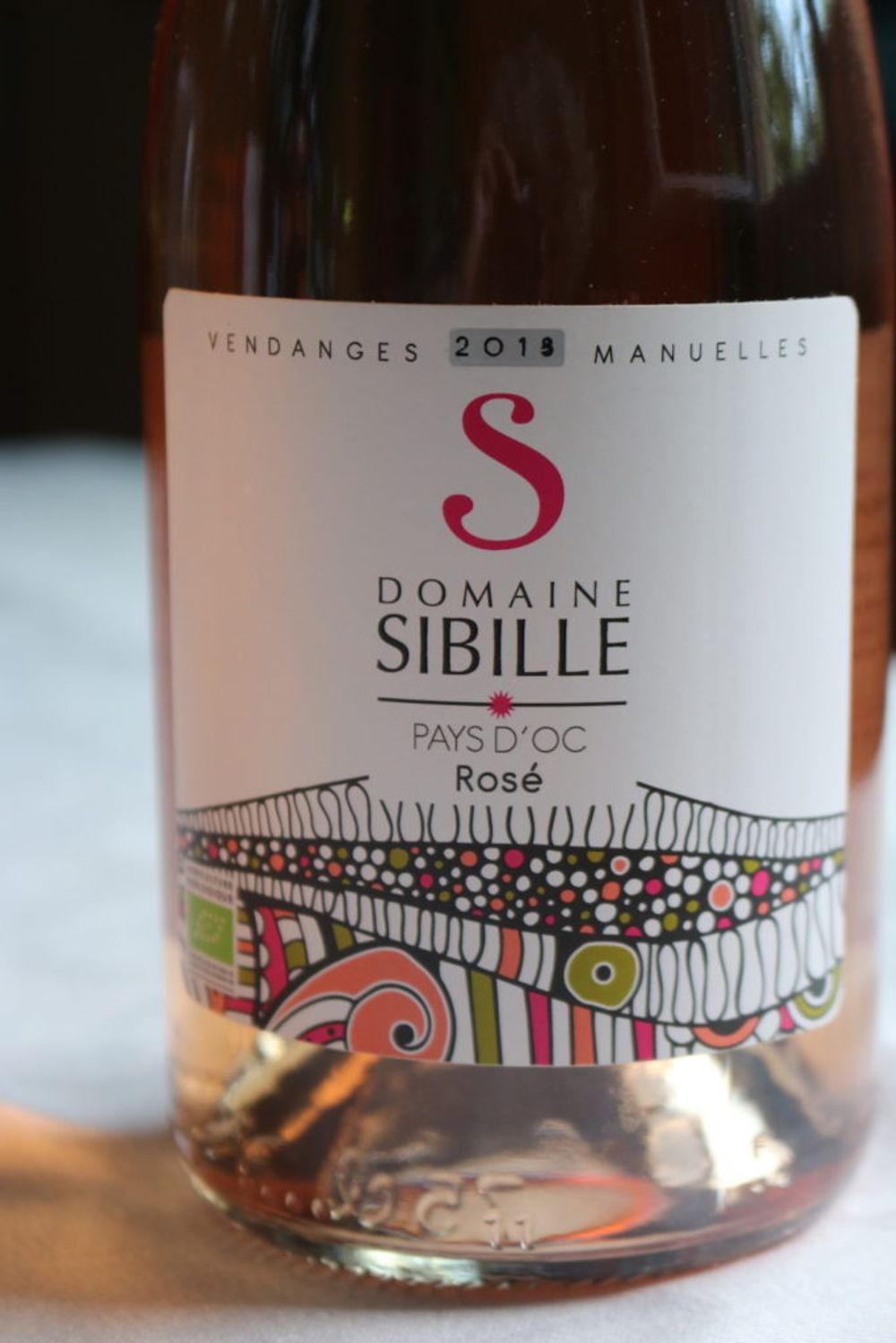
Domaine Sibille’s Syrah [not in UK] had opulent, luscious raspberries, cherries and peach fruit with long, fresh, silky redcurrant freshness. A silky, creamy fruit wine with a vibrant finish. Intensity of fruit makes me think it could be a gastronomic wine – white meats, fish and cheese. Domaine de Puilacher’s Prologue [not in UK] had a rich creamy character with cherry fruit and tart damson jam. Gorgeous intense fruit and structure.
Blended rosé
Blends are the fourth most common style, often with Grenache part of the blend.
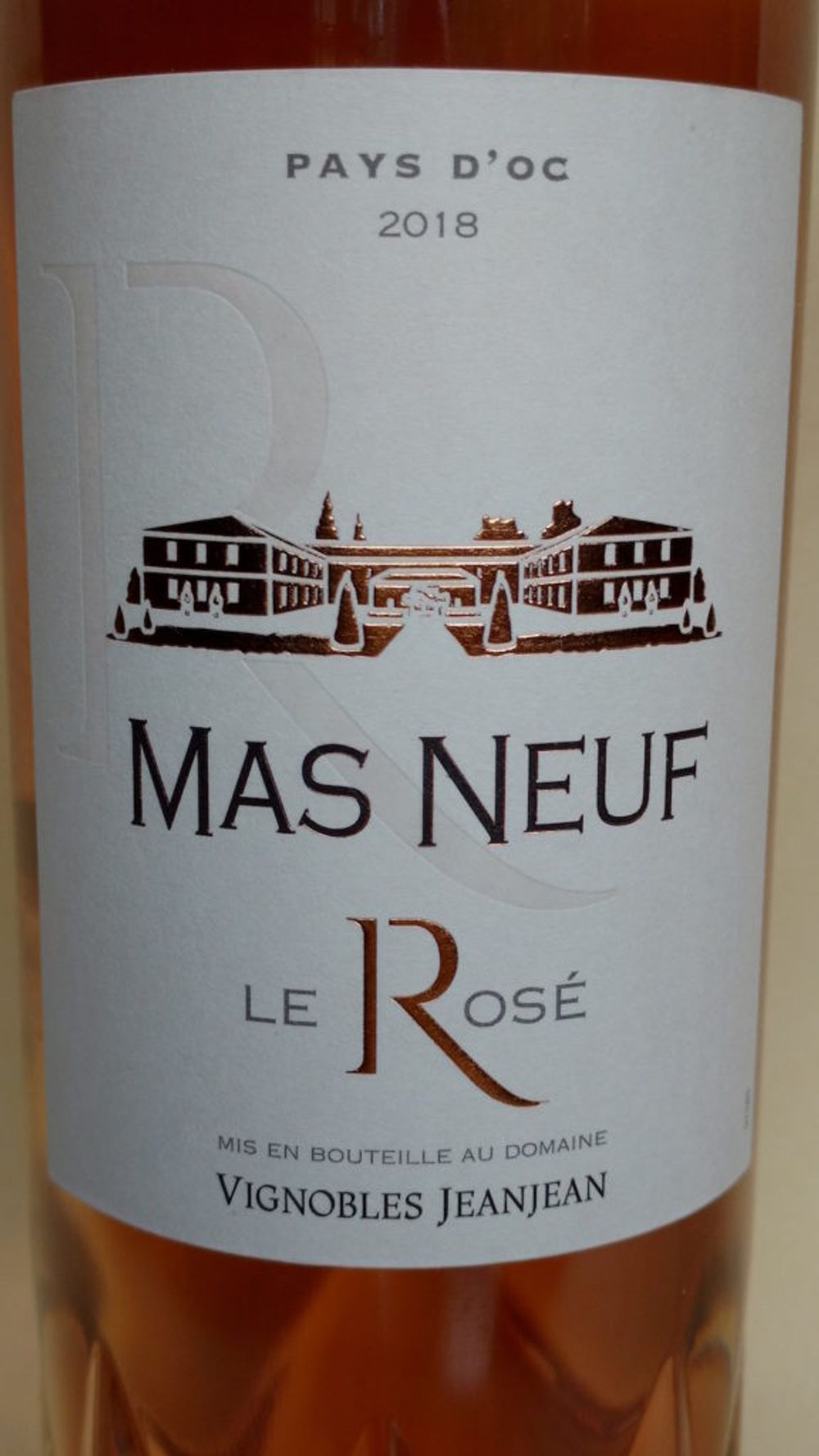
A go-to rosé for this summer
Domaine St Nicolas’s Amour de Venus [not in UK] 70% Grenache 30% Syrah had serious intense weight of perfumed peaches, ripe apricots, fresh spice, vibrant acidity with the Syrah giving a hint of blue flowers leading to a dry finish. Domaine Saint Hilaire’s Expression [Languedoc Imports Ltd, £11] 65% Grenache 35% Syrah, had a creamy richness, with wild strawberries, raspberries, sour plums and redcurrants. Not powerful, but intense, vibrant with firm mineral acidity. Montaquoy Sud’s La Cocotte Rosé [not in UK] 60% Merlot 40% Grenache was full of fresh red, blue and black berry fruit (loved this black fruit!) with a surprisingly firm mineral core giving the wine a fresh stony, austere character. Creamy fresh acidity with delicate powdery texture.
Vignobles Jeanjean’s Mas Neuf [not in UK] really showed the amazing diversity of IGP Pays d’Oc’s range of varieties This fascinating combination seemed to get the best of all the varieties 40% Carignan 40% Grenache 10% Colombard 10% Muscat à Petits Grains. Fragrant floral, tea rose aromas, fresh acidity and a punnet full of ripe rasbberries and strawberries – a go-to rosé for sitting in a summer garden. Maison Ventenac’s Cuvée Aure [not in UK] from the north west of the region betrays its proximity to south west France with 70% Cabernet Sauvignon blended with the Mediterranean varieties 20% Grenache 10% Syrah. Restrained black cherries and mulberries with a hint of perfumed floral character, tight structure and fresh acidity. Domaine de Sauzet’s Champs des Oliviers [not in UK] 52% Carignan 30% Mourvèdre 15% Grenache 3% Cabernet Sauvignon was full of creamy peach fruit, intense notes of redcurrants and fraise de bois, zesty citrus acidity with a hint of minerality. A serious full-bodied but very elegant wine.
Amazingly, very few of the wines tasted are on offer in the UK – so plenty of hidden gems and opportunities to source direct.
